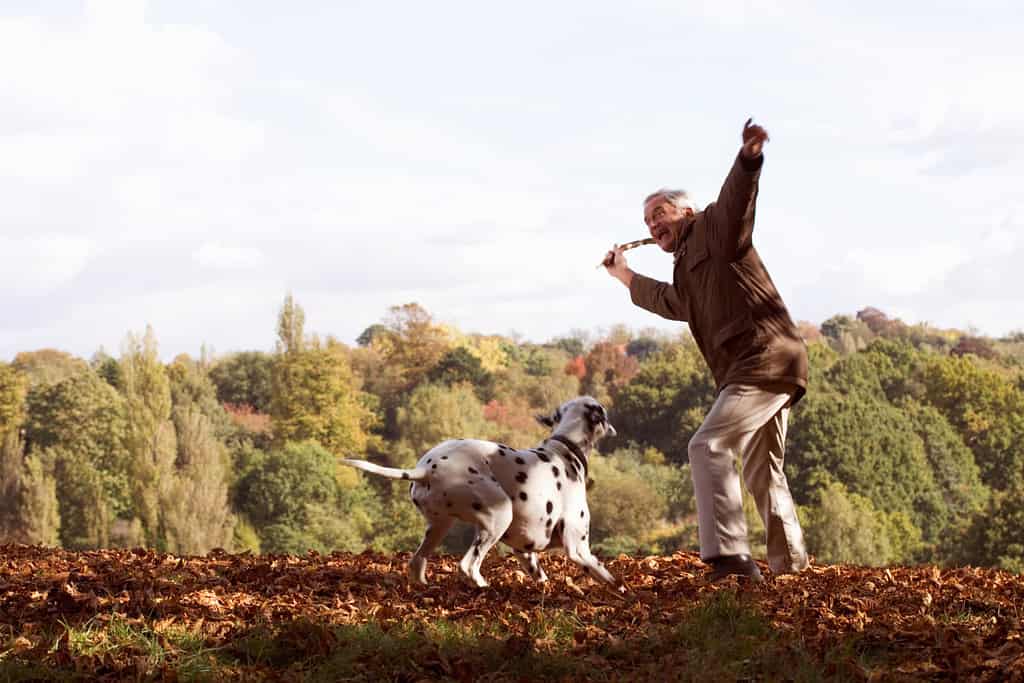You’ve started to dread leaving home. Your dog is not okay without you, but you have outside obligations. Even returning home can feel stressful, especially if your dog gets destructive or has accidents while you’re away. Helping a dog with separation anxiety isn’t the easiest task, especially if the anxiety is severe. But there are ways you can help. Discover four effective strategies to ease your pup’s separation anxiety below.
What Is Separation Anxiety in Dogs?
Dogs are social creatures, and they bond with you when they spend a lot of time with you. A dog that experiences separation anxiety is a dog that gets stressed out when the person that they’re normally around is not present. The stress response looks much like the response of humans when they’re experiencing any other kind of anxiety. For example, someone who is agoraphobic may not want to leave home and may experience severe anxiety when stepping out the front door. For dogs, that anxiety kicks in when they see you preparing to leave home.
Signs of Separation Anxiety
There are several indicators that let you know when a dog is experiencing separation anxiety. It looks different for each dog but some of the most common symptoms of separation anxiety include pacing, drooling, howling and barking, and destructive behaviors. Your dog may start pacing before you even leave the house, which can help you clock this behavior.

Dogs display different behaviors when they experience separation anxiety.
©Przemek Iciak/Shutterstock.com
The anxiety keeps them restless so they might start walking back and forth. Another symptom is excessive drooling. If a dog is stressed out, you may notice that they’re drooling so much that it soaks their chest. While you may initially reprimand vocalizations like howling or barking when you are getting ready to leave, your pup may be communicating that there is anxiety coming on because you are leaving. They don’t want to be alone.
Some dogs get destructive as well. They might shred your couch pillows or chew through your shoes. This is another sign of anxiety. Additionally, you may notice that your dog is unmotivated by treats and loses their appetite. If you notice that your dog has accidents when you’re away from home, this could be due to separation anxiety as well. Some dogs take it even further and escape confinement, causing you to have to search for them upon returning home.
Helping a Dog with Separation Anxiety: 4 Effective Strategies
1. Proper Play and Exercise
Like with humans, exercise has a relaxing effect on anxiety. Anxiety is like built-up energy without a proper outlet. To help a dog with separation anxiety, work on increasing their play and exercise. This is especially helpful if your dog has only a mild form of separation anxiety. Getting that play and exercise out of the way before you have to leave home tires out your pup, relaxing them. It helps them stay calm even while you’re away from home. Additionally, training your dog to do tricks can help exhaust them not just physically but also mentally.

Increased play and exercise can help to ease mild separation anxiety in dogs.
©Juice Flair/Shutterstock.com
2. Modify Behavior
To modify behavior, it’s best to work with a veterinary behaviorist. Throughout the training process to modify behavior, both you and your pup work intently toward changing the stimulus for separation anxiety. It’s an incremental training process that requires time and dedication and the slightest deviation can thwart your progress. As you train them, you desensitize all of the clues that you’re going to be leaving. Things like the clink of keys or the rustle of makeup in a purse can trigger your pup’s anxiety. Behavior modification requires you repeatedly demonstrate to your dog that even though you leave briefly, you quickly come back before they have a chance to panic. This might start with only a minute out of your pup’s sight. Patience is a requisite.
3. Entertain Your Pup While Away
While working on behavior modification, you must limit the time your dog spends alone. Even if you’re away, you can still keep your pup entertained by enlisting the help of a neighbor or a dog walker who can engage with them if you need to be away from home for an extended period. Aside from introducing new friends, you can also engage with the help of interactive toys that keep your pup focused on something else in the brief moments between visitors. It could be something simple like a mentally stimulating dog a licking mat or you could go for modern tech. A pet camera that allows you to interact with your pup while you’re away and that also dispenses treats is a great way to keep engaging with them even when you’re not present.
4. Speak With Your Veterinarian
The process of helping a dog with separation anxiety can feel long and arduous. However, the rewards arrive with dedication and consistency. If you’re feeling like you’re at a loss, connect with your veterinarian, especially if you’re noticing that your dog is engaging in harmful behavior, either with themselves or with other pets in the house. In severe cases of separation anxiety, prescription medication may be a helpful adjunctive. There are different options that you and your veterinarian can discuss. It might be something that is only for specific events, or your pup may require something for long-term use.
Ready to discover the top 10 cutest dog breeds in the entire world?
How about the fastest dogs, the largest dogs and those that are -- quite frankly -- just the kindest dogs on the planet? Each day, AZ Animals sends out lists just like this to our thousands of email subscribers. And the best part? It's FREE. Join today by entering your email below.
Thank you for reading! Have some feedback for us? Contact the AZ Animals editorial team.








